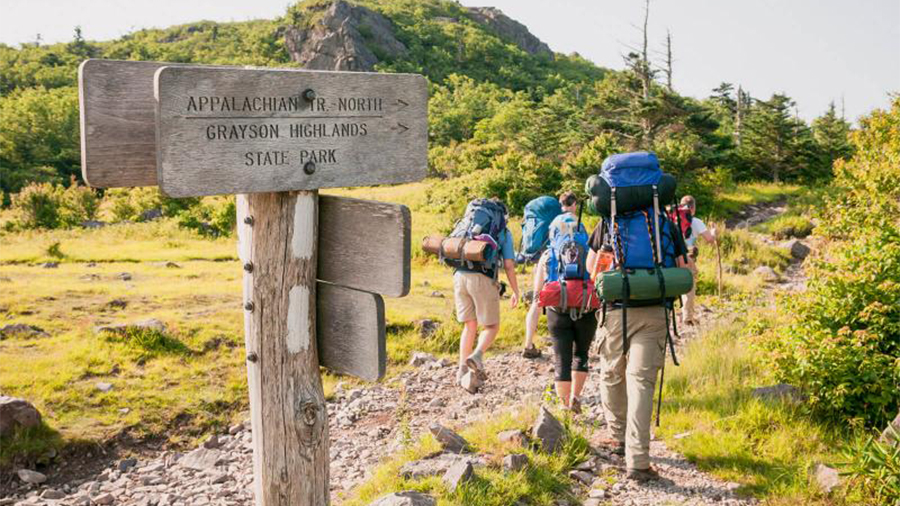Outdoor participation has proven sticky as participation grew in 2021, according to the Outdoor Foundation’s recently released 2022 Outdoor Participation Trends Report, which showed that outdoor participants increased by 6.9 percent since the pandemic began in early 2020, with the number of new and returning (lapsed) outdoor participants up 26 percent.
“There was a reasonable expectation that during 2021, the second year of the pandemic, outdoor participation would return to 2019 levels as indoor activity, including, dining, sporting events, fitness centers, and gyms, reopened,” the study states. “The 2021 data indicates that participation in outdoor recreation retained momentum in 2021. This data indicates that outdoor recreation is ‘sticky,’ once someone begins to participate, they are likely to continue to participate,” the report continued.
Overall, 164.2 million, or 54 percent of Americans ages six and older, participated in outdoor recreation at least once in 2021, up 2.2 percent year-over-year. The highest number of participants on record.
The number of kids who participated in outdoor recreation was also up. Since 2019, girls ages 6-to-12 participated 4.9 percent higher, and girls 13-to-17 are participating at 5.3 percent higher. Males ages 13-to-24 were less impacted by the pandemic, and their participation rate increased by less than 2 percent.
The report found that new outdoor participants are more diverse than the overall outdoor participant, and the number of participants 55 years and older has grown more than 14 percent since 2019. However, high frequency or “core” participation in outdoor recreation declined, including among youth (outdoor recreation “core” participant is defined as someone who participates 51 times or more in outdoor recreation in the past 12 months, has declined from 71.9 percent in 2007 to 58.7 percent of the participant base in 2021. The number of core participants has declined from 99.5 million in 2007 to 96.4 million today).
The study also found that despite the increase in the number of participants, the number of outdoor outings declined and has been in decline for the past decade. Other findings include:
- The five most popular activities are running, 64.5 million participants, gaining 739,000 year-over-year; hiking, 58.7 million, up 889,000; biking, 51.4 million, down 1.4 million; camping, 45.9 million, down 2 million; and fishing, 52.4 million, off 2.3 million.
- Females six years and older make up 46.5 percent of all outdoor participants. The difference between the number of male and female participants has been slowly inching toward parity over the past two decades. Since 2015, females have gained about one percent. The number of females participating in outdoor recreation has increased by 20 million since 2015, and the number of males has increased by 19 million.
- Seniors, ages 65 and older, grew by 2.5 million or 16.8 percent since 2019, the largest increase by percentage and by count in the participant base. The next oldest age group, 55-to-64, increased the second most with two million new participants for an increase of 11.7 percent. Increases in participation by persons older than 55 made up 43 percent of the total increase in participation since 2019, the period most affected by the pandemic.
- The participation rate for homes with children increased for more than five years. The pandemic accelerated the trend. More families are participating in outdoor recreation, with families, on-average, participating at a higher rate than adults with no children (46 percent to 61 percent). The study showed that family participation is “critical to future participation.” Most adults who frequently participate in outdoor recreation started participating as children.
- The average income of outdoor participants is $70,635, about $10,000 more than the average for all Americans.
- In the U.S, highly educated consumers are more likely to participate in outdoor recreation. Overall, 35 percent of Americans 25 years and older have earned a bachelor’s degree or higher, but more than 40 percent of outdoor participants in the same age group have a bachelor’s degree or higher.
- Campers most frequently participate in other outdoor activities, but most outdoor participants participate in various indoor and outdoor activities. Among those participating in camping, 98.3 percent participate in other outdoor activities compared with 89.1 percent for biking, 85.0 percent for hiking, 83.3 percent for running, and 78.9 percent for fishing.
- Being physically active outside is the number one reason males (74.9 percent) and females (80.2 percent) participate in outdoor activities. Interacting with nature, going to neighborhood parks and traveling through natural environments are other favorite aspects of outdoor recreation activities for participants.
















